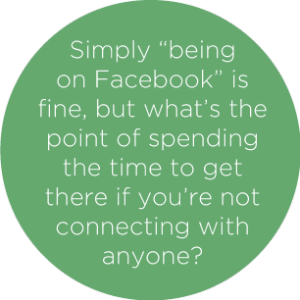It’s incredibly easy to get stuck in your ways, and it’s doubly true as a business owner. Running and operating a successful business is tough in any trade, so if you’ve been in business for five, ten, twenty years or longer, you’re obviously doing something right as the competitive landscape is notoriously brutal.
While sticking to your best practices that have kept you in business for years is undoubtedly a good thing, it can sometimes come back to bite business owners as they can be afraid to branch out and try new things. Nowhere is this more common than owners being hesitant to embrace the new changes in technology, computing, and myriad of ways the Internet can help them market their business.
Many Business Owners are Afraid to Toe the Technology and Online Marketing Waters
A high number of business owners that have been successful for a serious length of time didn’t grow up with a smartphone in their pocket. They probably didn’t get their first computer until well into their adult life, and may have already been well on their way to running a profitable enterprise before the Internet or “dot com” boom of the 90s.
 These are the business owners that still rely on the old-yet-trusted methods of advertising, like radio or print buys. And depending on your business type, area of operation, and target demographics, these still might be the most effective. But odds are you can get a much bigger bang for your buck with newer methods of advertising.
These are the business owners that still rely on the old-yet-trusted methods of advertising, like radio or print buys. And depending on your business type, area of operation, and target demographics, these still might be the most effective. But odds are you can get a much bigger bang for your buck with newer methods of advertising.
As someone who helps consult business owners get up to speed with today’s new avenues, the number one question I get without a doubt is “How can the internet, Facebook, Twitter, and other sites help my business?”
More likely than not, they have seen a competitor or know of a fellow business owner who has recently incorporated online methods into their advertising and marketing strategies, and have seen significant success. They want to have some similar success, but have no knowledge of which methods would work for them or their business, what kind of promotions to do, or even where to begin. If you or someone you know happens to be in this camp, fear not – this blog entry is here to help.
1. Set some goals: What do you hope to gain from your online marketing?
The first and most important question you need to ask yourself is what you hope to gain from your online marketing efforts. Too often, business owners who don’t have a clear picture of what they hope to accomplish rush into getting a website created, setting up a presence on social media, and doing some email marketing but having no goals set up in place. The result is an unorganized mess that doesn’t engage users.
Are you looking to simply get the word out about your business and its offerings to try and reduce your yearly advertising budget? Or do you want to run specific promotions and sales directed at those that find your business online? Do you hope to use social media as a way to give some personality to your business? Or are you mostly interested in increasing the amount of foot traffic your business sees as a result of people checking-in via Facebook and FourSquare? The first step to creating a successful online presence will be to have clearly defined goals – these will help dictate which platforms you will be on and what you will do once you’re there.
2. Manage expectations: Do your research on online marketing audiences and options
Secondly, you need to be honest and realistic regarding your expectations. If you’re struggling to keep the doors open and looking for a panacea that will solve all of your problems, utilizing technology and the web likely aren’t going to be the magic bullet you’re searching for. Also, while every business should have at least SOME sort of web presence, a detailed and multi-faceted social media strategy might not make sense for you. Simply “being on Facebook” is fine, but what’s the point of spending the time to get there if you’re not connecting with anyone? If you operate an insurance agency that specializes in retirement planning and annuities for a decidedly older clientele, chances are good you’re not going to see a high level of interaction with people on social media.
3. Set yourself up for success: Find the right tools or services that help you easily manage your various web presences
 Next, determine if creating a website and setting up a Facebook, Twitter, FourSquare, Yelp, and any other social media page is something you can handle. A website is the most technologically advanced aspect listed here, but services such as Word Press and 1 and 1 offer the tools to create a professional looking site with minimal design or coding skills. Twitter, Facebook, and other social media channels are surprisingly user-friendly to set up – if you can enter in some basic information about your business, you’ll be up and running in a matter of minutes.
Next, determine if creating a website and setting up a Facebook, Twitter, FourSquare, Yelp, and any other social media page is something you can handle. A website is the most technologically advanced aspect listed here, but services such as Word Press and 1 and 1 offer the tools to create a professional looking site with minimal design or coding skills. Twitter, Facebook, and other social media channels are surprisingly user-friendly to set up – if you can enter in some basic information about your business, you’ll be up and running in a matter of minutes.
But not everyone has the required level of computer savvy to set these up, or would simply prefer to have it handled by somebody else. Web designers and social media experts that you can hire for their services and expertise can be found in nearly every corner of the globe. Put the word out and shop around – bigger agencies can usually offer web design and complete social media control with a simple turnkey solution, but you’ll more than likely pay a bit more than if you hired a freelancer or two to get your website and social presence up and running.
4. Get started: Choose which sites or networks you want to use, launch and test for success
Now, you’re ready to start – you’ve set your goals for what you want to accomplish, you’ve tempered your expectations, you’ve looked into it and determined that your business type could benefit from a social media and web presence, and you’ve decided to either do it yourself or hire it out. But you’re not done yet! There is no shortage of things you can do online to market your business – the next and final step to getting active online is to determine which sites and networks make sense for you to be on, and which don’t.
A look at a few of the most popular online marketing avenues
- Website. Every business needs a website, without question. It doesn’t matter if you’re a restaurant, a courier service, a flower shop, a plumbing supply warehouse…you MUST have a website. More and more people search for businesses and services each day online, and you are doing yourself an incredibly huge disservice if you aren’t discoverable online. Even if it’s a basic, no-frills website explaining who you are and what you do – you absolutely need to have a functioning website. Case closed.
- Facebook. This is the first social media platform that most business owners go to first, and there’s a good reason for that – it’s where most of their potential customers are. Facebook not only boasts the largest base of users in sheer numbers, but the demographics are also the most varied. Facebook is increasingly becoming “older” as parents and grandparents create accounts to stay in touch and view photos and updates from family members. This is another reason why most business owners should focus on Facebook as their primary social media avenue, especially if your target market skews a bit older.
- Twitter. If Facebook skews a bit older, Twitter definitely skews quite a bit younger. It’s also exponentially more popular in urban areas or large cities. Meaning if your business is based in a predominately rural area and your average customer is in his or her 40s, you probably won’t see too much of an impact with your Twitter presence as the average Twitter user is in his or her mid-20s. Twitter can definitely be an effective way to reach a wide number of people, and many businesses have used it with notable success – just be sure you’re a good fit for it and understand it, as some people can get confused by its layout and method of tagging users and hashtagging events and trends.
- FourSquare. This is all for brick-and-mortars – if your business is predominately online or the lion’s share of the customers you serve aren’t walk-ins, you have no need for FourSquare. The company has seen tremendous growth over the past few years by allowing people to “check-in” at a business or public place. People can become the “mayor” of a business by checking in the most often during a period of time, and many businesses will reward their mayors handsomely. If you do operate a retail outlet and rely on walk-in customers for your business, you should absolutely have a FourSquare profile set up. Think about promotions you can do to get people excited (e.g. – anyone who checks in via FourSquare gets 20% off, or the mayor for the month gets a free item or items).
- Manta. Manta is a small business directory that will help owners and their visibility online. By taking the few minutes to create your business profile page (or claim it, if a customer has already created a page in the past), you’ll be helping to increase your SEO (search engine optimization) efficiency. What does that mean? If you run a bowling alley in Duluth, having a Manta profile will significantly move your business page result to the top of a Google or other search engine site if someone keys in “bowling in Duluth”. SEO rankings are hugely important, because as we mentioned above, more and more people find businesses by searching online. There isn’t much to do after you set up your profile, so definitely take the time to set up your account.





There is a big market for items on the internet. Go to any well known selling sites to market them. Follow the step-by-step instructions to list an item. Generally, you will need to post a digital picture on the site with a description and contact information. Then you are ready to go into business. Follow the tips provided to get a good start!
My tip is just simple. Make your content sharable. The more social signals that ping back to your website, the better your rankings. Create valuable and visual content that encourages sharing.